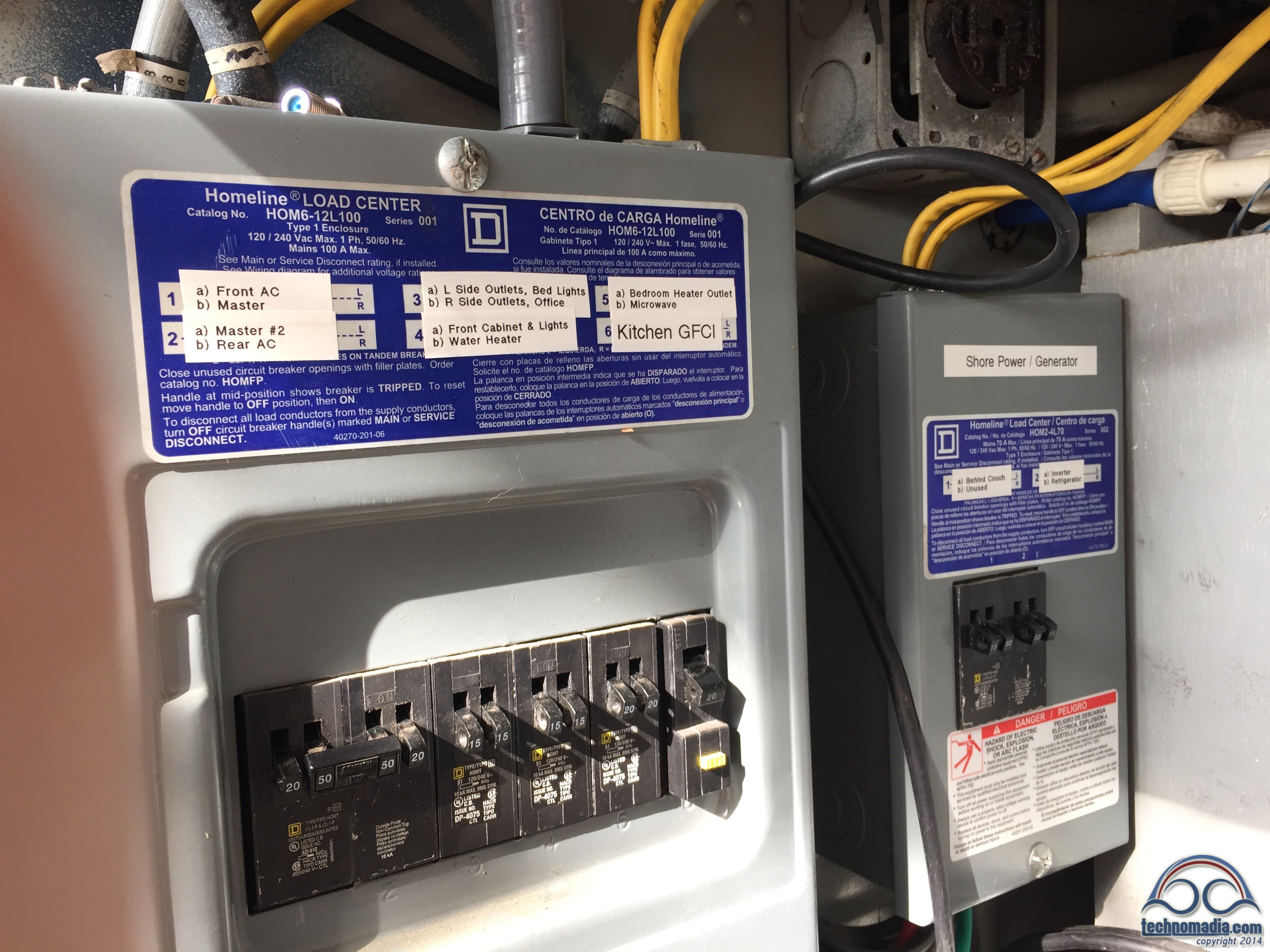
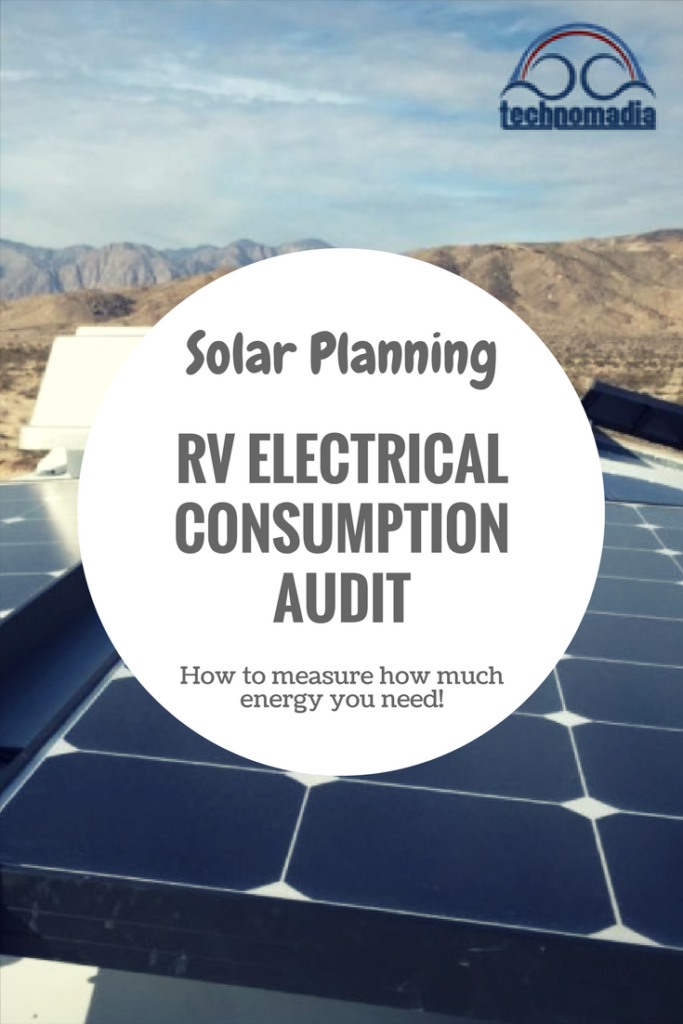 We get asked all the time: “How much solar power do I need?”
We get asked all the time: “How much solar power do I need?”
But when I reply with – “Well, how much power do you use in a day?”, I almost always get a blank stare in response.
We encounter only a handful of RVers who have any idea of just how much power various electrical devices they own use, and many with little knowledge of how much power they use in a typical day conducting everyday tasks.
Before investing in a solar system, battery upgrades (such as our lithium batteries), or other electrical tweaks – it makes sense to first invest a bit of time into figuring out just how much power you need, where the low-hanging fruits for efficiency upgrades are, and how much consumption you can control by adjusting your usage patterns.
Audit yourself. Dig deep. Learn the loads on every circuit in your rig.
Even if you never intend to try and live for a while boondocking with nothing but batteries and the sun to sustain you, the knowledge you gain in an energy audit is useful when connected to metered power, smaller hook-ups than you’re used to or even just overnight dry camping off batteries.
Knowledge is power. Especially knowledge of your electrical system.
Watt Is Power, Anyway?
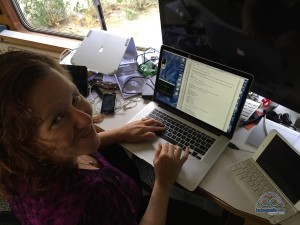
Power is defined as “the rate of doing work”, and is measured in a standardized unit called the “watt“.
When talking about electrical systems, many people often use “Amps” as a shorthand for power. If you are comparing two 12V DC circuits to each other, or two 120V AC circuits – the amp measurements (the current of electrons flowing through a wire) does indeed give you a good relative sense of the power demanded by a circuit.
But no end of confusion results when comparing DC to AC circuits – because a 12V DC amp carries just 1/10th the power of a 120V AC amp. For example – a 5 amp DC light on a 12V circuit is burning 60 watts of power, enough to light up a room. But a 5 amp light on a 120V AC circuit is using 600 watts, and likely lighting up the neighborhood.
To keep things straight, you need to rely on the most fundamental electrical equation: V*A=W
In other words, voltage (volts) times current (amps) = power (watts).
If you want to measure and compare power, you need to do it in watts. Amps alone gets you just halfway there.
Measuring Power Consumption
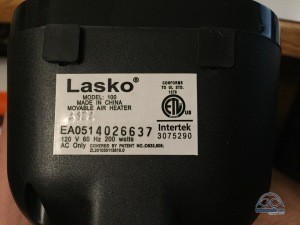
Determining how much wattage a given electrical device consumes can be tricky.
The simplest and crudest way is to just flip it over and look.
Most AC appliances are stamped with a wattage somewhere on them, though this is often the maximum possible wattage it can consume – not necessarily what you will see in typical use. Some other devices (particularly “brick” power supplies) are stamped with a maximum input and/or output amperage – and you can multiply volts times amps to get a rough max wattage.
DC devices tend to be less consistently marked – they may tell you nothing at all, or just the fuse size they need (5 amps, for example) – but only if something is wrong will that amount of current be drawn, blowing the fuse. Multiplying 12V * the fuse size at least gives you a max wattage for doing rough comparisons with.
But it is much much better to actually take measurements, rather than rely on rough estimates and stickers on the bottom of gadgets.
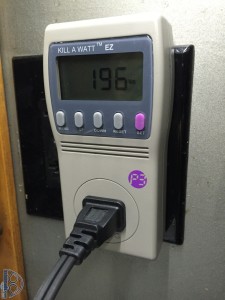
To measure AC power consumption – one incredibly invaluable tool for the job is the Kill A Watt Electricity Usage Monitor, an inexpensive gadget that plugs into a wall outlet – and gives you an accurate wattage readout of whatever is plugged into it.
But not all your AC devices can easily be routed through a Kill-A-Watt for measuring (like a built in microwave or hardwired lighting, for example) – and the Kill-A-Watt has no way to measure DC loads.
To get a real comprehensive picture of the power consumption on an RV, you have to go right to the source. The battery.
And to keep track of the power flowing out of your battery, you need a battery monitor.
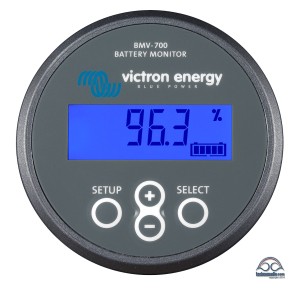 A real battery monitor is one of the most essential pieces of equipment on any truly self-contained RV, and it shocks me that they are so rarely standard equipment.
A real battery monitor is one of the most essential pieces of equipment on any truly self-contained RV, and it shocks me that they are so rarely standard equipment.
An electrically independent RV without a battery monitor is like a car without a gas gauge. If you fill up at every stop (always going to campgrounds with hookups) you can get by without a gauge, but it is haphazard to venture far from hookups without one.
The most basic battery monitors are very analog affairs – just an ammeter that shows the current flowing from the battery, and a voltmeter that shows the battery voltage. You can do the math yourself to work out the wattage.
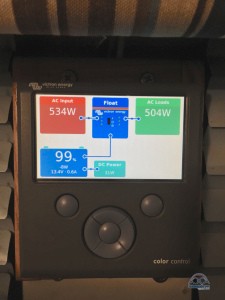
Smarter battery monitors actually act like a gauge – measuring every amp that flows in and out of the battery, calculating an accurate “gas gauge” percentage of how much battery capacity you have remaining.
The smartest battery monitors can actually do the power calculation math for you – and thus give a readout in watts directly, and not just separate “volts” and “amps” displays.
We have a Victron BMV-702 battery monitor in our bus, which gives a wattage readout as well as telling us the battery volts, amps, amp-hours consumed, and percentage remaining. It is the smartest battery monitor that I know of, and it works great even if you do not integrate it with a Victron inverter or CCGX display panel.
On our prior two RVs, we used a Blue Sky Energy IPN Pro Remote battery monitor, which integrated with our Blue Sky solar controller. Another solid choice used by many RVers is the Bogart Engineering Trimetric battery monitor, or the Xantrex LinkLite battery monitor. Some inverters have battery monitors designed to integrate into the inverter control panel too, like the Magnum Battery Monitor for Magnum Inverters.
Whether you have a basic ammeter or an actual wattage readout, having some way to measure battery current opens the doors to conducting a real energy audit on your RV.
And if you don’t have a battery monitor… Before you invest in solar panels or new batteries – get one!
This should be the top item on every RVer aiming for solar’s electrical upgrade list!
Conducting A Comprehensive Energy Audit
To get an accurate sense of how much power your RV can consume, you need to break it down one circuit at a time.

Start by pulling the plug – disconnect from shore power and disable any solar charging. Turn off your inverter, turn off every power switch, close all AC breakers, and pull all DC fuses. Shut off everything you can find.
Hopefully you’ve set aside plenty of daylight to do this – because now you are sitting in a very dark RV. If you’re relying on a water pump for fresh water, also fill up a few water bottles, and set aside a reserve for manually flushing your toilet. You’re going to need it to last through the day ahead. And make sure you’re starting with an ample charge on your mobile gadgets.
The only thing that you should leave powered up is your battery monitor.
DC Power Auditing
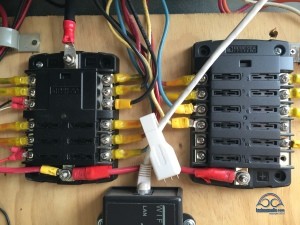
Start by taking an initial baseline “everything off” reading – recording the voltage, current, and watts reported by your battery monitor.
Hopefully this will reveal an extremely small amount of power being used – since this overhead is being consumed 24/7. In our case – our baseline drain is 3.5W, which powers our battery monitor and lithium BMS.
If you see more power being consumed here then you expect, track it down – there must be some circuit that you didn’t find to pull the fuse to.
Once you have every circuit shut down, it is time to enable them again – but only one at a time.
Start with circuit #1, and put the fuse back in. Record any changes in the baseline – does it jump up more than a trivial amount? Do you know why?
Now it is time to turn on everything that is attached to circuit #1, one at a time. Record the current (and wattage) for each device, light, fan, or gadget. Be sure to give things enough time to stabilize – the power may bounce around a lot when something is first turned on.
If your RV has poor documentation on the electrical wiring – now is your chance to play detective to figure out just what devices, lights, and outlets are tied to each circuit. Take copious notes – if you ever have an electrical problem in the future, this information can come in quite useful.
For every device that you measure – record the full range of usage scenarios. Measure the lights at their dimmest, brightest, and typical levels. Measure the roof vent fan at high, medium, and low. Don’t forget to measure how much power it takes to run water for showers and doing dishes – it takes power to run a water pump. And so on.
Once you have tracked down every device on circuit #1, pull the fuse again. And then move on to circuit #2.
Once you are done – you can subtract the baseline from every measurement to calculate the actual power needs of every DC-powered device on your RV.
You may discover that you have some mystery circuits in your rig that do not appear to be connected to your house batteries. They may be connected to your starting battery instead, so try disconnecting the starting battery to know for sure. It is good to identify these circuits, because over-using them might leave you unable to start your rig someday!
AC Power Auditing
Now it is time to fire up the inverter.
Some RVs have almost all the AC outlets fed through the inverter (we do), while others have only a few outlets and appliances capable of being powered via the inverter off the battery. You will only be able to accurately audit circuits that can be powered by the inverter, but if you are preparing for solar-powered boondocking these are the only ones that will matter to you anyway.
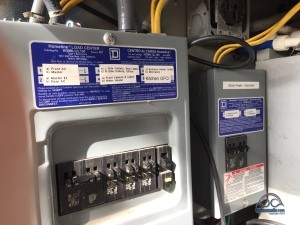
Once the inverter is powered up – leave all the downstream circuits switched off, and take a new baseline reading. This will give you a sense of how much overhead power your inverter consumes just being on, and idle. With many inverters, this overhead can be substantial.
When connected, our Victron MultiPlus 3000 inverter ups our overall baseline to 7W even when switched off – and all the way up to 29W when on, even without a single downstream circuit connected!
In other words – it makes sense to shut it down overnight if we are being energy frugal!
Now that you have a new baseline, the process works exactly the same as the DC audit. Turn on one circuit at a time, measure any changes to the baseline to find and understand any parasitic loads that you can not turn off, and then turn on and measure one AC device, appliance, or gadget at a time that you might use on that circuit.
Be sure to test a range of situations – we measured every cooking mode on our convection / microwave, the power consumption of actually watching a BluRay movie, and even the different brightness settings on our computer monitors. Test every variation you can think of – you may discover some surprising corner cases where power consumption spikes unexpectedly!
And you may find other places where you are being unnecessarily frugal – for example, Cherie’s monitor uses essentially the same power at medium and low brightness, so there is no gain to be had suffering by dimming it all the way.
If you are testing the power consumption of things with thermostats – let them cycle on/off and get both readings. You will see huge swings in refrigerator or air conditioner power consumption depending on whether or not the cooling compressor is engaged.
When you are measuring AC circuits – be sure to record the DC current recorded by the battery monitor. Your inverter may also display the AC current or even calculated AC wattage being used, but this is not taking into account the inverter overhead that comes from converting DC battery power into AC power.
You can compare the power from the battery to the power reaching your appliances to get a better sense for just how efficient your inverter is. Typically, inverters are 80% – 90% efficient at turning DC power into AC power, so always remember that AC appliances are wasting up to 20% of your power to inverter overhead!
Factoring in the Power Factor: On DC circuits, watts are always equal to volts * amps. But things get a bit more complicated on AC circuits, because some loads (particularly motors) cause the alternating current sine waves measuring the volts and the amps to shift out of alignment with each other, making the V*A reading actually higher than the real power being delivered. This shift is called “Power Factor” of the load. If the power factor is 1, watts and V*A are aligned. But as the power factor gets smaller (and close to zero) the measured V*A will become more and more distorted. The Kill-A-Watt can display both VA, watts, and the calculated power factor. Some inverters only display the VA output (since it is easier to calculate). But if you look to the DC readings from a battery monitor, you can always determine the actual wattage being pulled from your batteries.
The higher the VA, the less efficient an inverter can operate due to power factor losses. A Kill-A-Watt can help you identify these inherently inefficient loads.
The All-On Baseline
Now that you have taken a look at every circuit individually, it is time to put all the fuses and circuit breakers back to their normal positions.
Now take a new baseline reading – first with the inverter off, and then with it on. These will give you a sense for your minimal usage scenario – letting you know just how frugal you can be without needing to pull fuses and flip breakers. This will show you all the parasitic loads that you have hanging around – like microwave clocks, standby circuits for devices with remote controls, and any other overhead that comes from just having stuff plugged in even if it is turned off.
You might discover that you can save a lot of power by plugging some things into a power strip, and flipping the power strip off when not needed.
In our case, our DC baseline is 8W, and our AC baseline with the inverter powered on is 53W.
Bigger Picture Auditing: Set Up Some Typical Scenarios & Measure Some Tasks

Now that you have a solid grasp of the power usage of the individual circuits, you can go even further and set up some typical usage scenarios to get measurements of. For us – we were concerned with how much power we use while both of us are working on our computers, with our big monitors on, a cellular booster boosting, maybe a light or two in the living room, and some music on the stereo.
We also tested scenarios like “movie watching in bed” and set up tasks like “cooking a favorite meal” or “doing a sink full of dishes”.
A lot of scenarios and tasks use a variable amount of power – so you can take an average reading, or record a range, or use your battery monitor to determine how many amp-hours (or percentage points) are drained from your battery for a given task.
We’ve learned that baking a pizza in our convection oven can use 5% of our battery capacity. Knowing that – we can decide when we have the spare capacity to treat ourselves.
Ongoing Audits & Sanity Checking
Even after you have done an energy audit, pay attention to your battery monitor and ongoing usage. You will find that some things use different amounts of power in different situations than you initially measured, and you will eventually begin to develop an intuitive feel for your RVs electrical system.
For example – over time you will be able work out reasonable estimates for daily power consumption for devices that cycle on and off – like a residential fridge, which uses a lot more power when the compressor is on than when it is off. On warm days in the summer, the compressor will be on a much larger percentage of the time than on cold winter days – and it will make a huge difference in the daily cumulative energy drain.
As you get a better feel for your electrical system, you will naturally become much more energy efficient.
Consider your energy audit a living document – measure new things that come into your household, and every so often double-check your old readings too.
Working Out Your Energy Budget
Just like with personal finance – some people do best with a detailed plan.
If that is your style – once you have all this data, you can work out a “typical day” daily energy budget.
Set up a spreadsheet that calculates how much time you expect to use a given device each day, and multiply it by how much power it uses. It is easiest to work in watts and hours, but some prefer to use amps and hours. If you do use amps – make sure you only use the DC amps measured by the battery monitor!
For example:
Microwave: 1755W * 0.25 (15 minutes) = 439 Whrs
Microwave: 135A * 0.25 (15 minutes) = 33.75 Ahrs
Total up your daily estimated usage, and compare that to your battery capacity. You can roughly convert your battery capacity in amp hours into watt hours by multiplying by 12 – so if you have a 250Ahr usable battery capacity (always keep in mind your battery type’s recommend depth of discharge), that means you have 3,000 watt-hours of battery to play with given a full charge.
And that means that 15 minutes of daily microwave cooking will use up nearly 15% of your usable battery capacity!
If you are planning to rely on solar entirely – once you have an energy budget, this gives you a goal of how much energy you need to recoup every day to keep your batteries full.
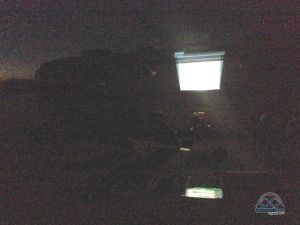
Most people, once they actually work out an energy budget, realize that they need way more solar than they initially thought. And – way more focus on energy efficiency!
But the upside of having an energy budget is that you know when you are ahead and can splurge. When we know we have energy to spare we treat ourselves to something that takes a lot of power to cook. Or we treat our friends to a movie on the side of the bus with the power-sucking outdoor video projector.
Our Energy Audit
Your results will of course vary, but it can be helpful to see what power consumption others have measured. So here is our latest energy audit that we spent all day yesterday collecting:
(if you’re reading this on RSS or e-mail, you may need to click through to the full post to see the embedded spreadsheet)
It can take a full day to dive this deep into your electrical system and power measurements (the data collected above took nearly 10 hrs to test & compile), but the information is so worth it. We’ll continue to measure various scenarios, and add them to the spreadsheet as we continue to learn and tweak our own systems. As well as fine tune where exactly our sweet spots are usage versus solar collection.
We already have some tweaks inbound before our next boondocking adventure – including a 12v television.
Related Posts:
Our entire Solar for RVs Series
Our 800 Watt RV Bus Roof Solar Install
Understanding Solar Panel Specifications

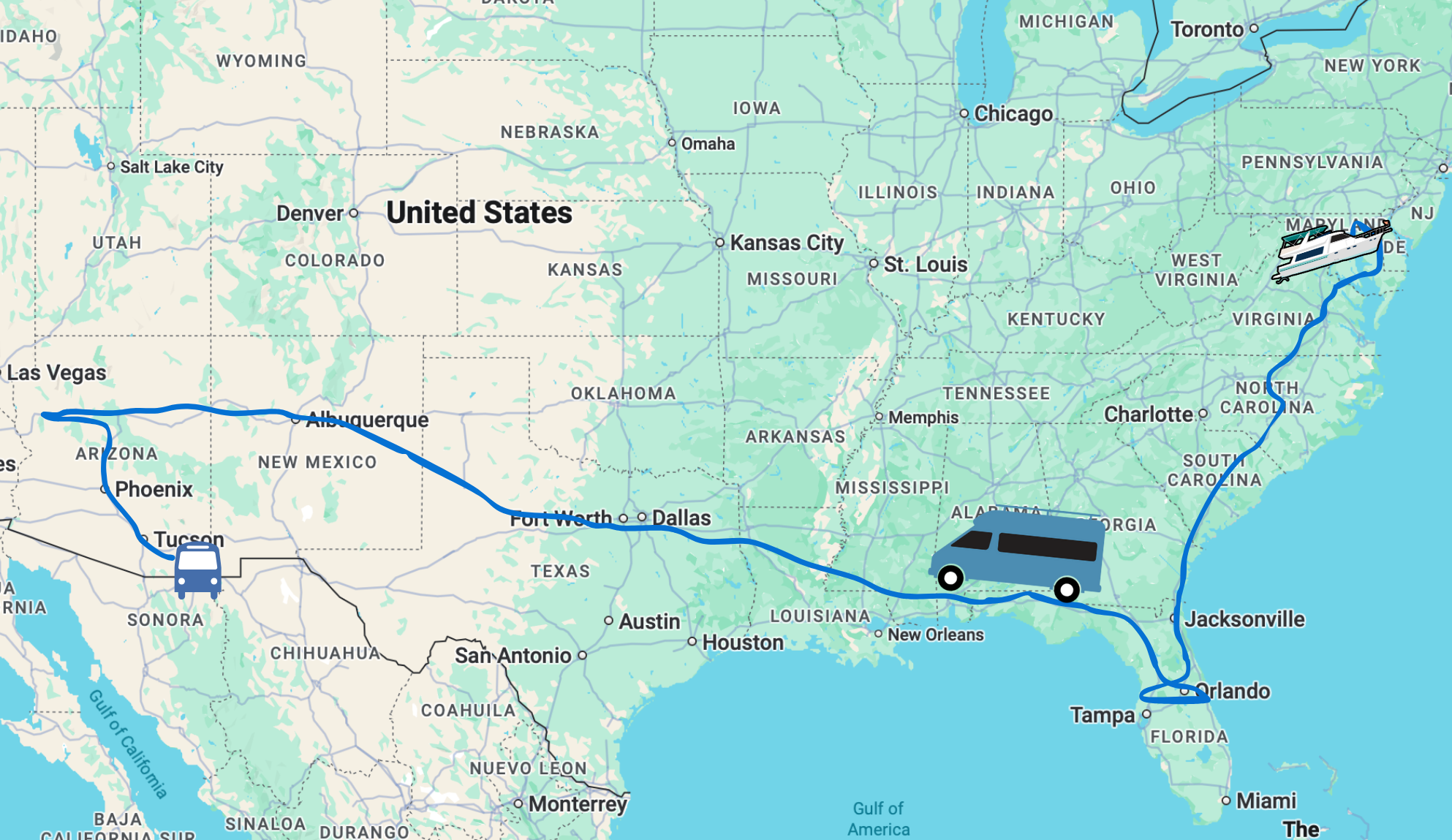
I didn’t see house battery charging on your list. THAT turned out to be a HUGE “parasite” for us. It takes power to recharge them. I have yet to see anyone include that power usage on their consumption list. Did I miss something?
An energy audit helps you understand how much power you need overall so that you can pick appropriately sized batteries and solar panels to power everything.
I am not really sure how you can view the batteries as parasites – they are absolutely core to the system. And how much power it will take to charge them is completely dependent on how much you are draining out of them between charges. This is where having an audit can be extremely useful.
Cheers,
– Chris
Hi Chris, The batteries I’m referring to are not a part of the solar setup. They are the batteries on our RV. We don’t have any sort of monitor on them to cut off charging when they are full so they continually soak up power from those of the solar battery bank. It really sucks it up! We’re planning on disconnecting them from the RV inverter/converter and monitoring/charging them separately so we can control the power usage of our RV.
We did an audit and tried to include EVERY little thing that would use electricity in our RV. Our microwave was using 55 watts per hour just to sit there and display! We got one of those Kil-o-watt meters which has been very helpful. One of the biggest challenges has been trying to figure out what is wired for AC AND DC in our RV and what is only AC. Some things run off of both, like our furnace.
In the end though, we’ve realized that winter is (of course), a period of minimal production and unless we add more panels, we’ll just have to supplement with a generator for the time being.
Thank you for your comment!
Chris and Cherie,
Another great and informative article. Is there a way to get the full spreadsheet available? I can re-create it but much of it will be the same for our rv and it is such a great baseline. I know you make the spreadsheets available for rv mobile internet users, but also know this is an article forum and not part of your member services.
No, we don’t have this one available for downloading – it’s very specific to our setup. (And this is our personal blog, not part of our business. 😉 ).
Chris & Cherie,
Very much appreciate the thoughtful and thorough treatment you guys give the tech in your blogs and videos. You’ve really got me thinking a lot about adding solar and LiFePO4 when we purchase our RV in 2016.
I noticed the energy usage profile includes a lightly used ham rig. Just curious how well the ham setup is working and what bands you’re using, antenna setups, etc. Have you encountered any pushback using your rig in RV parks? I’m definitely considering doing something similar in a year or so when we retire.
73’s,
Steve
AA0SB
We’ve actually never used it 🙂 We got our licenses, but haven’t a clue what to do with them. Hope to encounter a HAM on the road who can teach us the ropes.
That’s is a very thorough energy audit. I got a kick out of you guys measuring your Hitachi Magic Wand usage at 11.75 wH/day.
Okay, say the audit shows I can live normally unhooked for 2,500 Whrs/day. This is a WAG, but let’s use 3 days needing to depend on the bank, solely. With a LiFePo4 bank of 9,200 kW and drawing it down 80%, that’s 7,500 Whrs.
My question is, given this scenario, how many watts worth of solar panels would you need to replenish such a bank? I realize my scenario is not real because the panels will do something each day and there’s always the running of the engine alternator. Also, for my panel array, I’ll be installing a good MPPT controller (two, actually, to deal with the two series).
Is there a “preferred ratio” for panel watts for LIFO watts? I have room for up to 8-160W panels; but I don’t want to over-install. I prefer not to tilt but rather add more panel(s) to make up for the % gain from tilting.
Jerry
2008 Country Coach Allure470 38′ tag
Unfortunately, there’s not a straightforward answer to this question. There are a lot of ‘depends’ that you have to ask yourself and run calculations on. Ultimately, you have to ask yourself what your goals are with having solar.
– What time of year are you optimizing for, and how far south will you be? You get far more sun in the summer than the winter.
– What will the ambient temperature be?
– What will the weather be like? Sunny? Cloudy? Overcast?
– How much shading will you be dealing with?
– Will you be tilting to maximum output?
– How long do you want to ideally be in one location between re-charges at the pole or via alternator or generator?
The answer is vastly different for a setup that you want to keep the batteries ahead of the usage curve for multiple weeks in the winter under occasional cloudy conditions while staying put with tilted panels…. than a system optimized for summer travels with frequent drive days.
For us, we wanted maximum versatility, so we went with as much as we could feasibly put on our roof (800w) to maximum the passive collection when we don’t have time/desire to tilt…and supplement with a ground deployable array (600w) when we’re setup for a bit in one location. (Check the video archive for more details.)
We’re still playing around and tweaking with our setup, and will be keeping notes on how well it works in a variety of situations.
Perfect timing for this article. After stopping by AM Solar in Springfield Or. over Thanksgiving the first question was how do you want to use solar? The second was how much energy do you use now? Since I already have a Kill-a-watt I have already started to measure our consumption on basic appliances, and your article is a perfect follow-up. Thanks! I’ll be publishing our results – although it will take a while to compile our data since we are only out in the RV once or twice a month while we are still working and in our bricks & sticks… 17 months to Full-Timer heaven though!
Excellent.. glad to be able to provide some guidance on how to go about getting the data you need to make an informed choice!
Hey guys, lots of great info here, very thorough! As a former installer of marine wind and solar solutions I completely agree with you that a tracking type battery monitor (the kind that can total up amp-hours consumed over time) is essential equipment if you really want to know what is going on with your electrical system. The “gas gauge for your battery” analogy is right on. Once you have one installed though, why not just use its amp-hour tracking feature to audit your energy usage? Your situation may be a lot more complex, but for the majority of us, just a few 24 hour periods of normal living off the grid monitoring the accumulated amp-hours will provide a quick and easy snapshot of daily consumption and automatically account for items that cycle (like a fridge) plus you don’t have to guess at usage times. Sure, these meters aren’t 100% accurate but they will get pretty close to reality and will account for items you might miss in a manual audit. That was basically how I audited most of my clients and all my solar installs were successful. Keep up the good work!
Rob
Thanks Rob for the great comment. And definitely, taking a reading for a typical day’s usage can be very helpful as well.. and give one a general baseline. And if your goal is to design your solar around your ‘normal’ usage, that could be sufficient. We’ll also be taking readings from different usage scenarios – like a typical work day, versus a ‘touring’ day, versus a low energy work day.
However, if you’re wanting to tweak your energy usage, find phantom draws or make adjustments in your usage – nothing beats knowing what everything draws and what adjustments make a difference. For us, we live different when living off solar versus when we’re on hook-ups versus on metered electric (and our goal is versatility, not designing for 100% solar living). We make adjustments to our lifestyle when in energy conservation mode, and the audit helps us know what adjustments are worthwhile and which aren’t – especially if we encounter some cloudy weather and need to further adjust.
For instance, had we not done our energy audit, I would have never known that taking my 30″ monitor below the medium dim setting really isn’t worth the little energy savings it yields. And knowing what cooking costs us in energy helps a ton in meal planning. And other activities, we now know what we can splurge on and what we have to be very frugal with.
And as a result of our audit, we’re making other tweaks and able to isolate which lights are worthwhile upgrading to LED, which appliances we should have 12v options for, etc.
I always did this stuff on the fly, with basic tools, so it’s nice to see a rigorous explanation.
I’m not sure why people don’t have constant energy consumption readouts when they are boondocking. If something is out of kilter, it’s pretty obvious. The most obvious monitor is a shunt at the battery and a cabin meter that measures the amps across the battery, so both power in and out of the battery. The solar panels may have some loose connection. Something might be left on.
I agree that the audit is the first step. You can buy meters that tell you the DC amps in or out of the battery, and these meters will also accumulate the amps. There used to be a $50 version called the Watts Up, but now there are $20 knock offs. You have to break the circuit into the battery for amps, and you need both poles of the battery for voltage.
http://www.amazon.com/gp/product/B00EYZS6R6/ref=oh_aui_detailpage_o03_s00?ie=UTF8&psc=1
If you break into the circuit from the battery to the DC panel, and insert the meter, you can monitor everything for a day and the meter will accumulate the watts you actually use. Some things cycle, like fridges. Alas, propane fridges with electronics can use a lot of power in a DC system. The watts you use with the electric fridge you have kind of makes me sick. I have a Dometic, smaller, and the electronics draw almost 300 w/h a day. I think I would look into those, if I needed a replacement. Anyway, there are cheap and simple ways to get everything laid out, and a constant ‘net watts’ reading from the battery reveals most abnormalities in daily use.
I always figured most of your power is going to those computers and monitors. The spreadsheet bears that out. For many of us, a mobile Intel Core i5 will get the job done for 15 watts, on a 13 inch screen. That’s the conservation angle, for sure. With solar, it never hurts to know what you have to do to survive if the weather is bad and the batteries are draining. Well, you can always go find a hookup, or carry a small generator.
It’s interesting to follow what you do, the technology with the travel. I still think a more minimalist approach to things like boondocking is better, but I’m not trying to earn a living out there, or do it for all that long. You really need a precise understanding of batteries and charging systems to keep it minimalist. The economics say that batteries and solar will get cheaper and cheaper, so I guess this stuff can get pretty fancy over the next 10 years.
Indeed – everyone needs to find their own personal balance point around how much power they can live off of. And the first step is knowledge around where your power is actually going.
We lived for years using tiny laptop screens, no fridge at all, and milking every milliwatt we could get out of at first just 130 watts of solar. Now efficiency is still very important to us, but it is really nice to be able to work on a big screen.
And as for the fridge… Propane wasn’t really a good option for us, so we intentionally went with the most efficient DC electric fridge we could find knowing that it would be a major power hog.
The tradeoffs will be different for everyone.
Thanks for sharing!
– Chris
Our lifestyle isn’t about minimalism.. but balance.
We did 4 years of minimalism, and know well how to do that while still working. These days, we think it’s entirely possible to both feel abundance and be off-grid. And that’s the system we’ve designed. 🙂 Not for everyone, but then again.. we’ve done our time with out bathrooms, big screens or comfortable seating. Those just aren’t things we’re willing to compromise anymore – especially when the work we do online and on our computers is what funds our lifestyle. A 13″ screen would NEVER get OUR job done, and that’s what it’s important.. to us.
There’s no such thing ‘as better’ – just what works for you.
Our fridge’s energy usage may make you sick.. but the original propane installation in our coach would have been deadly.
I have a 3 way fridge (12 volt, 120 volt and propane). Some folks say theses don’t get cold enough but It seems fine to me.
What was it about your propane fridge set up that was an issue for you?
Did you mean ‘deadly’ from a safety stand point or energy usage?
Thx
The fridge just needed some TLC and new parts (thermostat, etc.). But our entire propane system was unsafe – more details in the links 🙂
We live in New Jersey. There are slim Pickens here in relation to RV modifications. I am thinking about splitting the distance and having my work done at one of the recommended shops in Indiana. It is after all the RV capital of the USA!
We loved our experience at Master Tech RV in Elkhart.. awesome folks, and a great shop! (but, they are not really solar experts, great general modifications & service however.) AMSolar did conduct training classes for installers, and do have installers they can recommend all over the country. Believe I heard about one in Pennsylvania a while back that folks were happy with.
I hear a lot about AM Solar, but we are on the east coast and it will be at least a couple of years before we get to OR. Are there any recommended RV solar installers on the right side of the country? We want to add about 400 watts to the roof of our travel trailer.
Would recommend calling AMSolar.. they may have recommended installers closer to you.
This article, as with all your others, is AWESOME! So extremely informative and helpful.
Thanks, also for the great video chat. Mitch and I learned quite a bit. We are very appreciative of all your efforts. You guys are the best!
Hi Cherie and Chris!
Just finished watching your solar panel live broadcast. Thanks for that, this post, and all you do for present and future nomads!
I was the one asking about induction versus propane cooking. I’m trying to decide which way to go when we do our van conversion this summer. Although an induction cooktop seems great from a cooking (and safety) standpoint, it does use a gob of power (gob being a highly technical term). Looking at your spreadsheet, it indicates you use seven hours per day on what I assume is the medium setting (700 W). I’m guessing this was just a rough idea or perhaps an upper limit, given that you also show twenty hours of rice cooker usage per day. That’s a lot of rice! 🙂
Because we won’t be running an air conditioner, microwave or electric heater off our future battery, the induction cooktop seems like it would be the biggest electron sink, which is why I am leaning toward propane for our cooktop (or perhaps both???). To help me decide, I’m wondering if you might do me a favor and give me an idea what sort of power is needed to boil X amount of water and/or fry an egg or whatever sort of cooking you do. While I could calculate some of this using the heat capacity of water (or chicken eggs), empirical data would be a lot better. I didn’t really find any useful information online.
I have a few months to make this decision, so in the interim if you do ever find the time to measure this or you just want to give me your thoughts on the matter, it would be greatly appreciated.
Pete (and Nikki) – future nomads
Hahaha.. oh my goodness. I totally recorded that in minutes instead of hours. My goof. That’s what I get for spending pretty much 36 hours straight taking readings and transcribing into the spreadsheet.. eyes get a little blurry. If I ever get to cooking for 7 hours a day, someone shoot me. 😀
Got it fixed, thanks for catching that.
Water takes less than 4 minutes to boil on the induction. We’ll be taking some common ‘meal’ prep scenario readings over the coming weeks and will update the spreadsheet. Check back 🙂 Only so much we can do in one sitting.
Ha! I figured it was something like that. I think you can be excused given the hours and hours you spent on this exercise! I’m looking forward to seeing some kW/taco data whenever you get around to it. 🙂
Oh.. and my mind slipped. We actually did take some ‘heat water for tea’ measurements in this post:
https://www.technomadia.com/2014/11/rving-gear-that-keeps-us-hot-and-not-bothered/ – Check the hot water dispenser section.
Very informative! AM Solar did a fine installation on your bus. Oregon is about as far away from us as could be, but distances shouldn’t matter in an RV, right? We plan on some extensive work to our 2004 Safari in order to make it full time friendly. Solar is one of the top items on the list.
Wow – Those who are just getting into solar have no idea how valuable this post is!! Now I have a blueprint for pinpointing and eliminating (or at least reducing) those pesky power sucking phantom loads in my “new” coach. For all those who are planning a solar install this post is mandatory reading. Well done Chris! – Van
Thanks for this. If … no WHEN I find my van I will be referring back to this. Been shopping for a year. It can’t be long now.
Great info, this should make it a lot easier for everyone to figure out their usage
of electricity.
Thank you for sharing.
Someday will have a cold one or two together.
Chilled by solar power, I hope… Looking forward to it!
– Chris